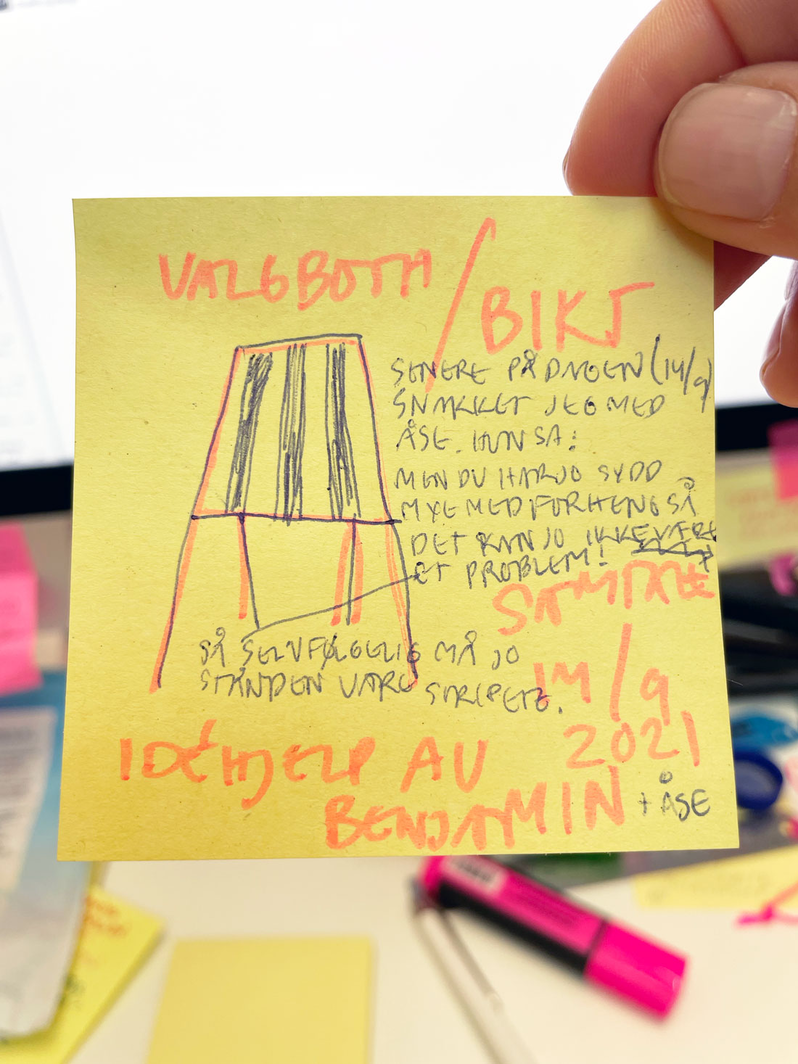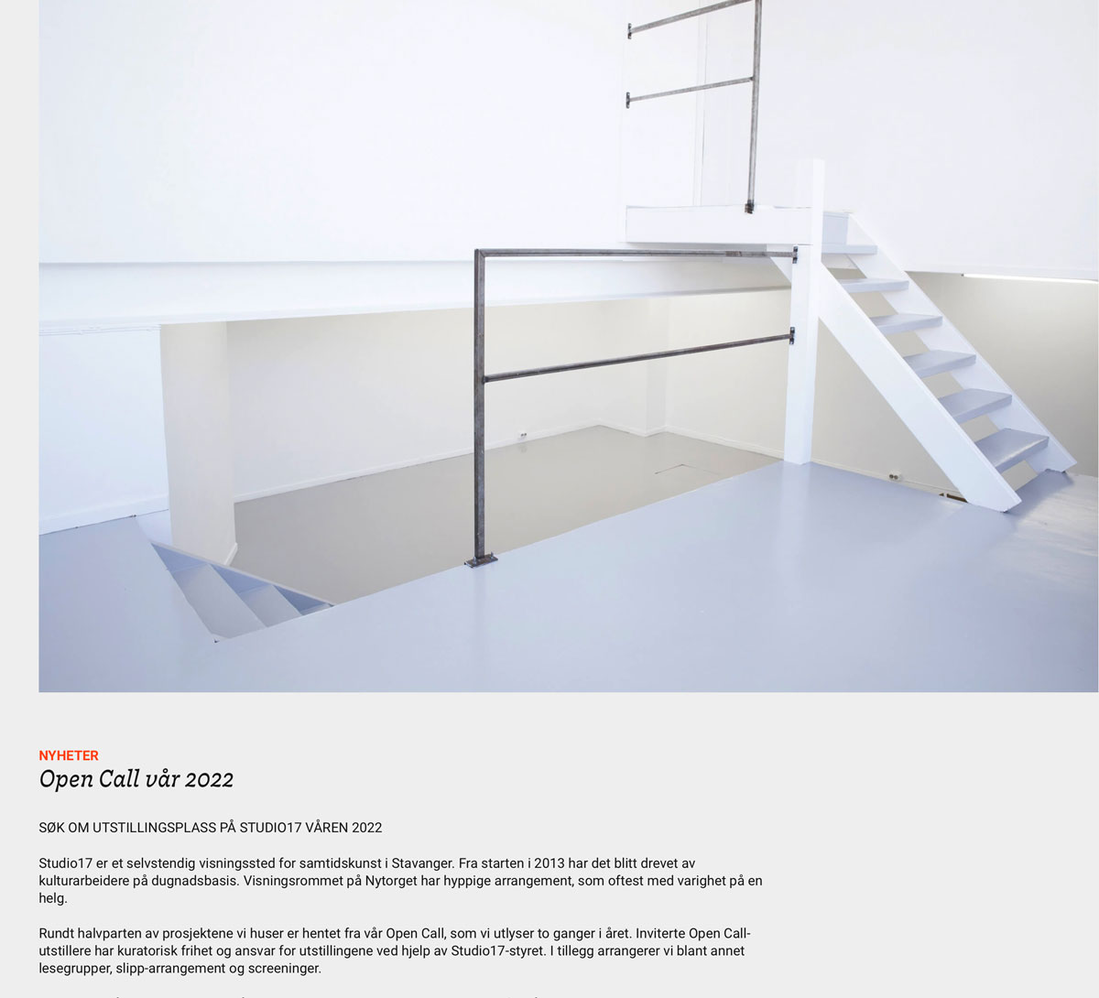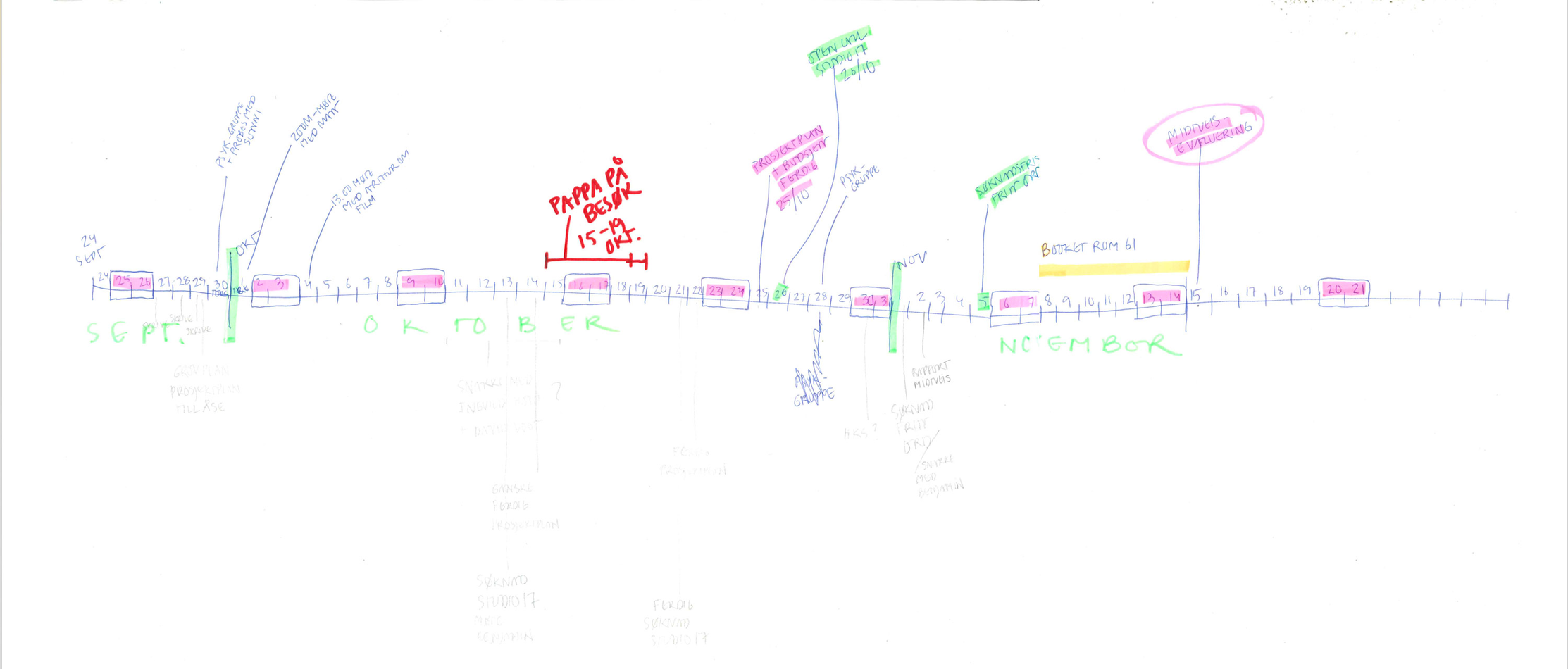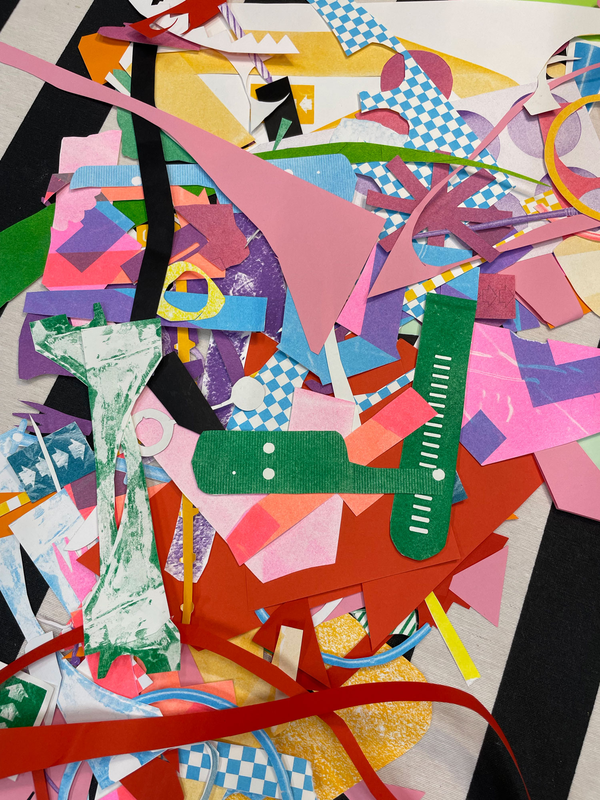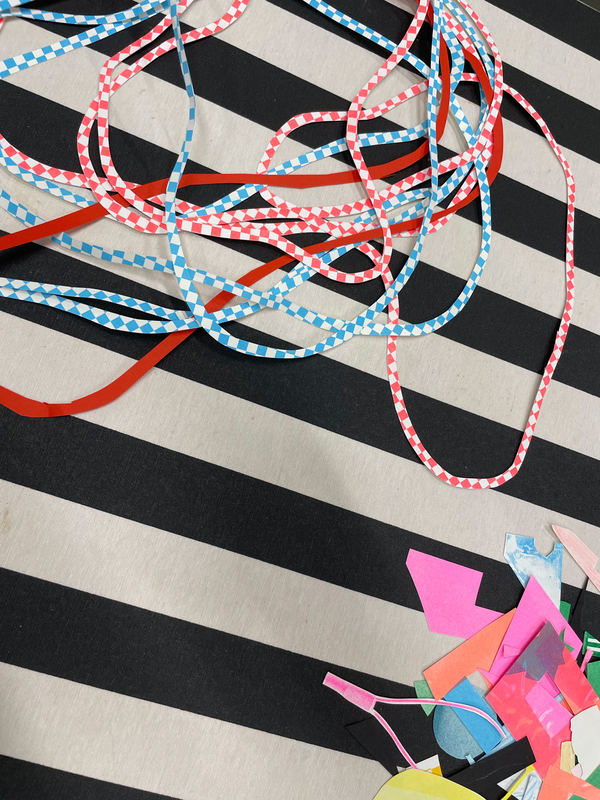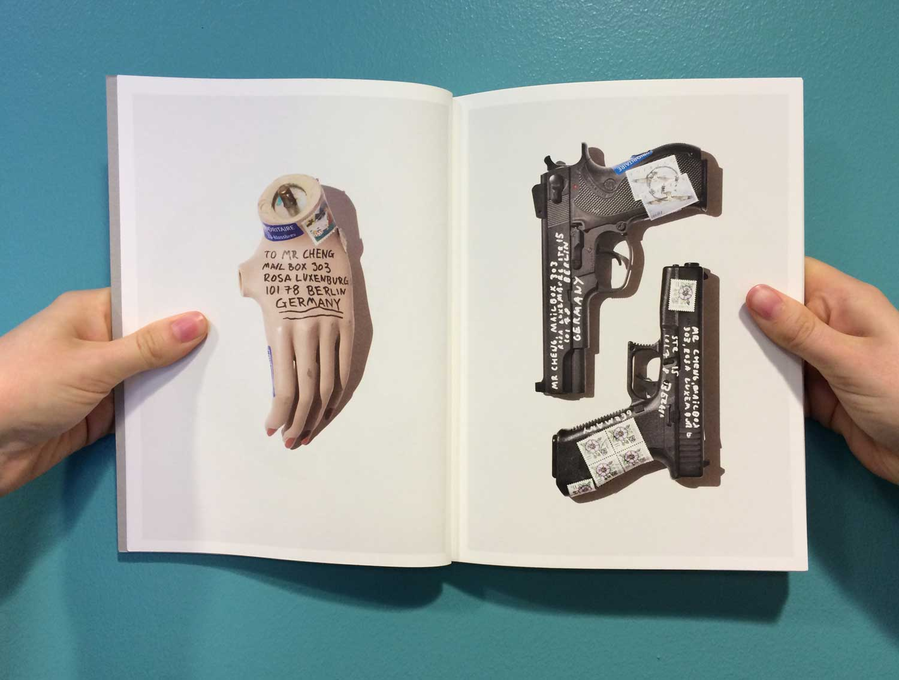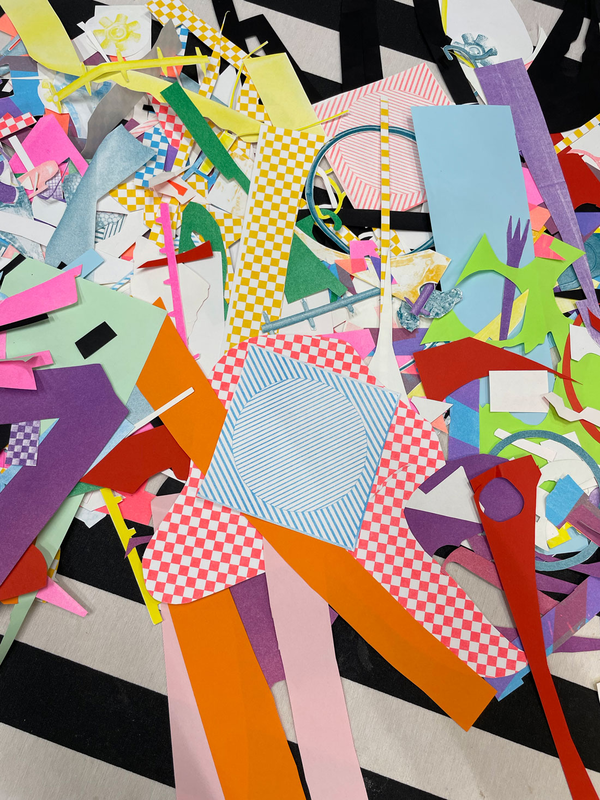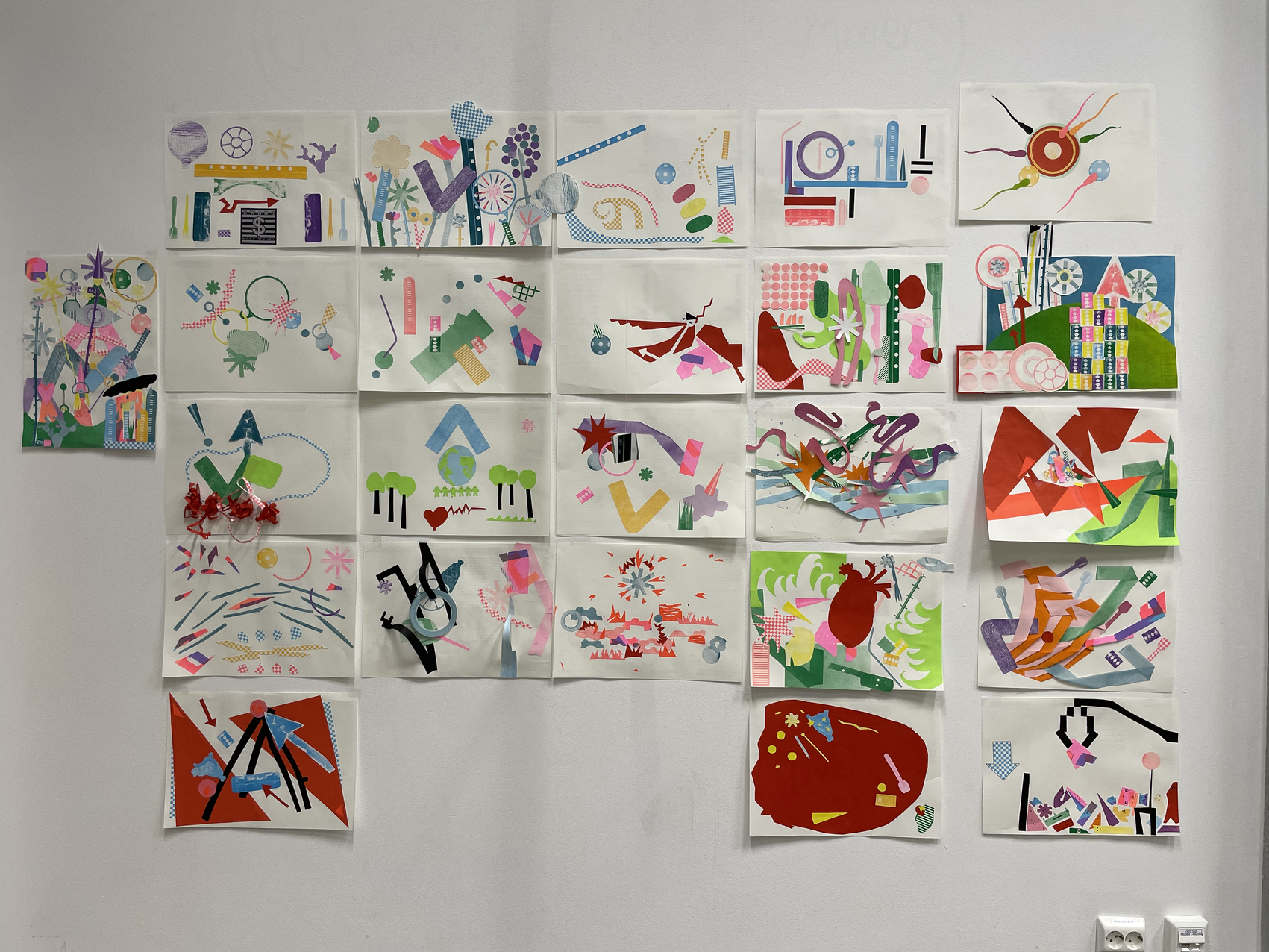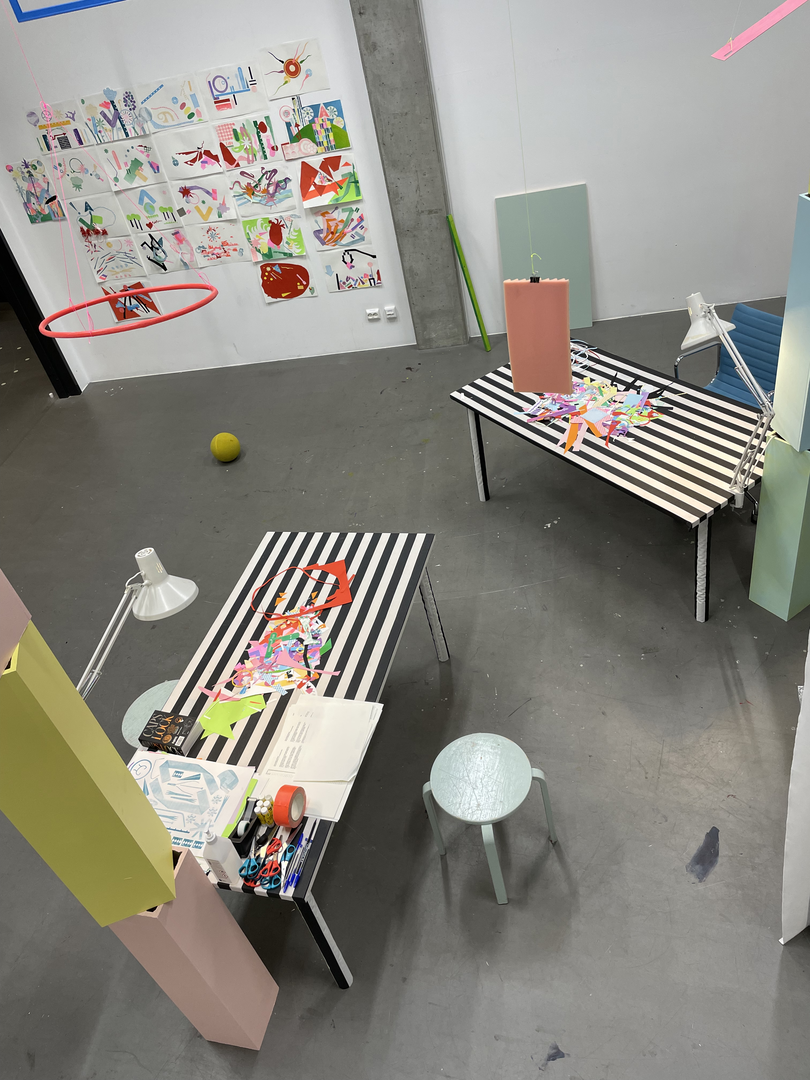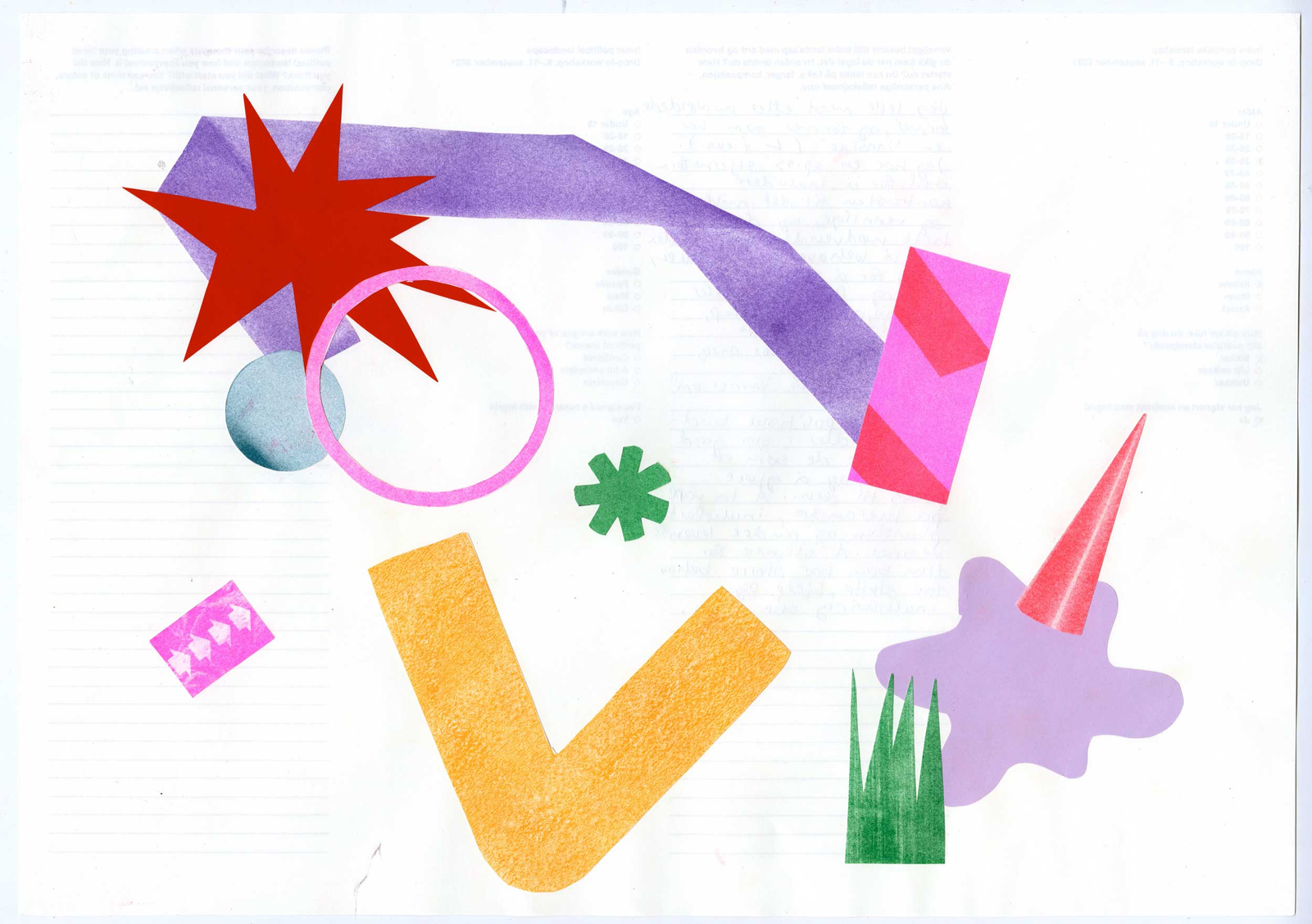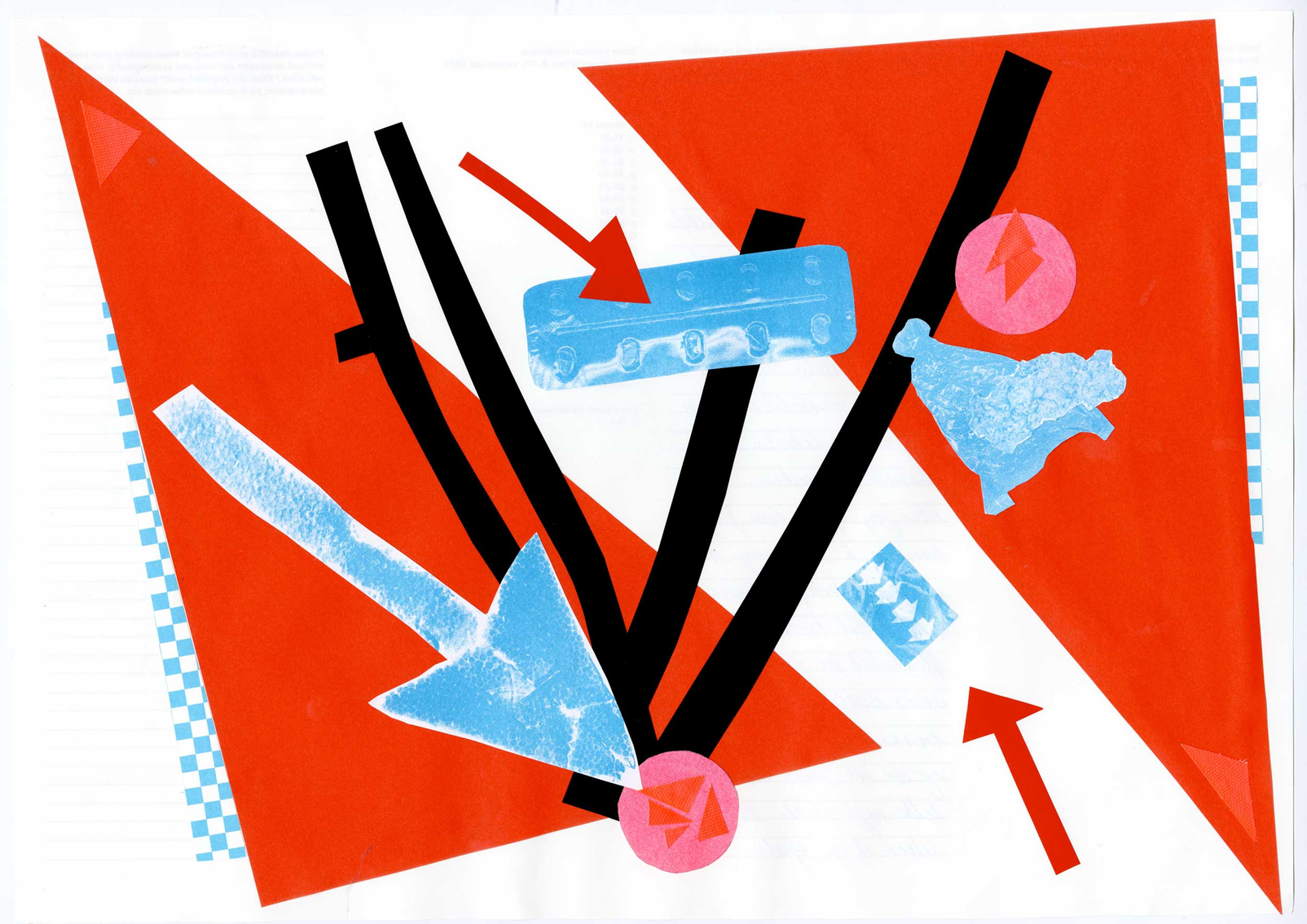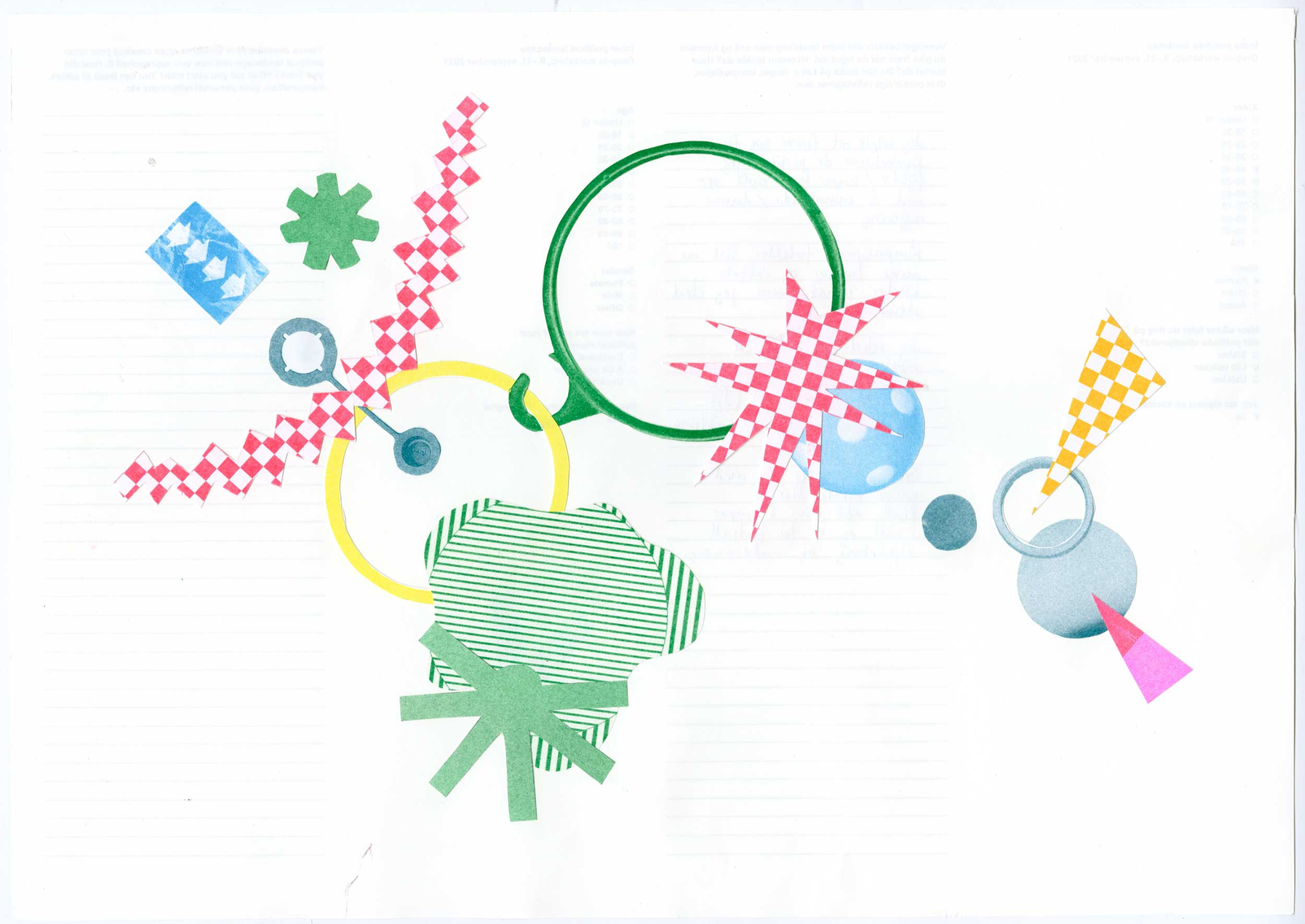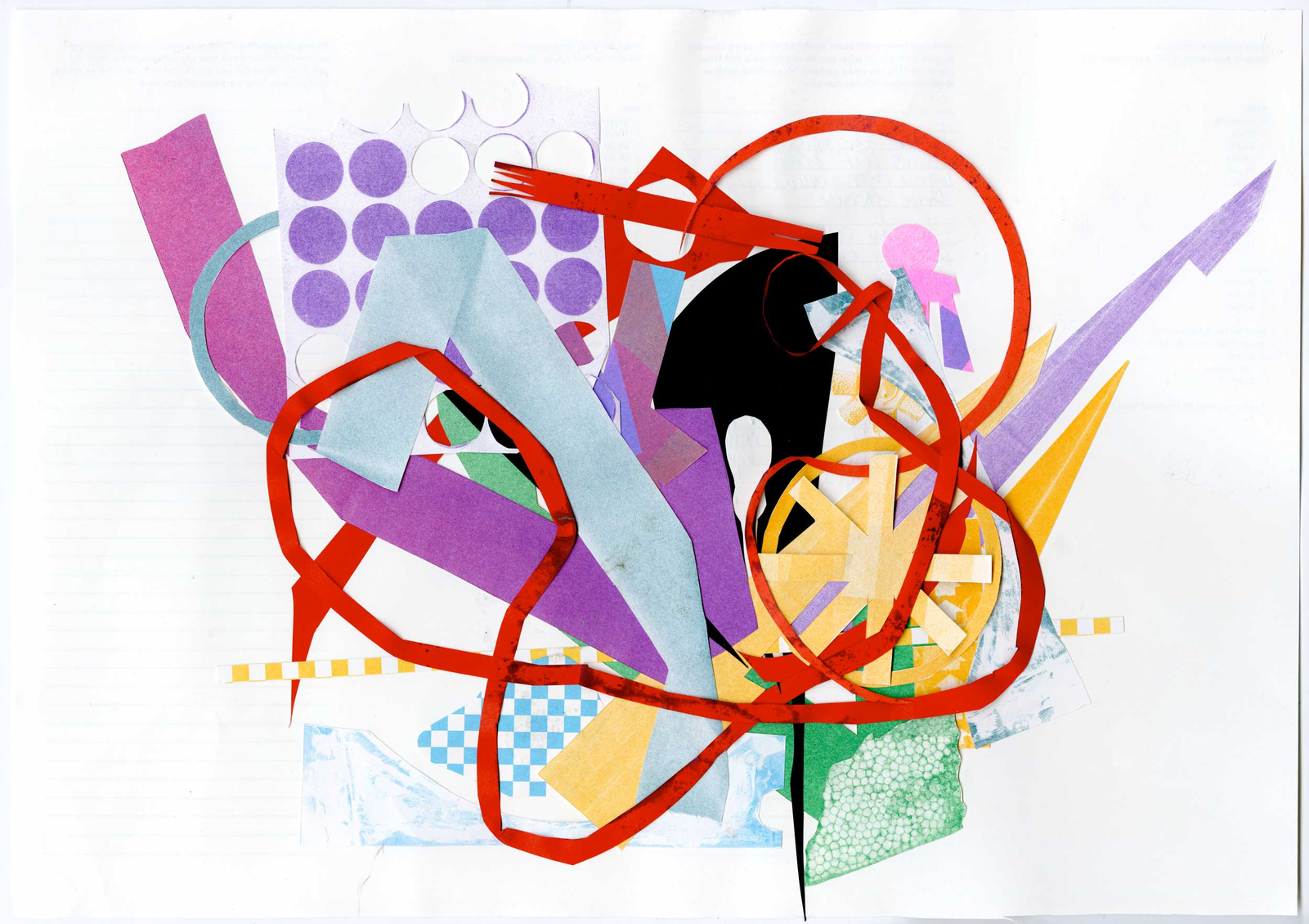Committee is set and will travel to Bergen.
Trying to find a place to be.
I don't know yet about having it IRL and streamed, but to me it seems good to keep it only IRL.
My plan is to build up the scenography from the workshop once more and have the presentation in the scenography.
A. Hosted a workshop – The Inner Political Landscape
B. New (and old) idea about a Political Confession Booth
C. Planning the mid-way evaluation (15. November)
D. Writing a revised project description
E. Making a lot of administrational work finished for the mid-way
F. Open call to Studio 17 in Stavanger
G. Plan September to Mid-way
H. Applying for grants at Grafill, UiB and Fritt Ord Foundation
I. Figured out the project is actually about finding your inner poliitical voice and how to investigate it.
J. Found out about the three main tasks for the department/ministry!
OPEN CALL FOR EXHIBITION SPACE AT
STUDIO 17, STAVANGER
Creating tools to investigate your political voice with
Save, archive and publish /braodcast /spread what comes out from those tools.
So that others can get inspired, understand something about how other people are thinking and making up their mind – or understand something about other people being insecure and unsure about political things.
The archive will become a tool in itself.
Public Information.
MAYBE TOGETHER WITH BYVERKSTED IN STAVANGER.
An example of «Design for politics» showing an original poster from the Norwegian municipal and county council election in 2019 with the Norwegian Directorate of Elections as the sender. Text on the poster: “How to vote:”
Photo: Ingrid Rundberg 2019.
An example of «Political Design» showing a spread from the book «To Mr Cheng» by the Swedish graphic designer and artist Eric Ericson.
Photo: Ingrid Rundberg 2015.
The Swedish graphic designer and artist Eric Ericson creates projects that can show us what «Political Design» can look like. Ericson has written several books where the themes in different ways shed light on the human in relationship to society. In his book To Mr Cheng (2008), Ericson examines in depth how the Swedish Post Office works. As his method Ericson has sent various items to an address in Berlin, Germany. The address does not exist, but the objects have been stored in cabinets at the receiving post office and then photographed. In the preface to the book Correspondence (2010, preface), Ericson writes:
The entire postal system reflects that society in different ways
and state we live in.
He continuous with describing how the size of slot on the letter boxes testifies to the level of the country's concerns. Ericson uses the Post service’s most basic function, to send letters, but extends this action far beyond normal use. By doing so, he highlights both the mundane in using the postal system but also the amazing fact that the service of sending objects around the world actually works. Ericson uses a variety of expressions such as illustration, photography, graphic design, radio, and music and often lets his projects materialize in books. One of his publications also become theater as the show Letters from Eric Ericson at the Elverket scene, Dramaten in Stockholm 2011.
The project Things that Might be True is a project that needs to co-operate with other people – to investigate things together with, to get informed by, to discuss with, to reflect on specific themes together with and so on. Participatory design can be described as the collaboration that is actively going on between the project itself and its audience/participants. In the book Routledge International Handbook of Participatory Design, the authors (Simonsen and Roberson, 2013) describe the collaboration between designer and participant as follows:
Participatory Design is driven by social interaction as users and designers learn together to create, develop, express and evaluate their ideas and visions. Shared experimentation and reflection are essential parts of the design process.
In relation to participatory design, the following questions are central to my project:
Can a group of strangers form the basis of a story about the well-known?
How can awareness of personal, political attitudes create understanding of the society around you?
Participation has a close connection to whom is listening,
Vad betyder Adversarial? Var kommer det ifrån?
Fokus i projektet Saker som kan vara sant är också det på the soft zones of voting.
Hvor plasserer jeg meg i et designperspektiv, hvordan designprosjektet fester seg i designfeltet /ståsted
Kilder Chantal Mouffe / Agonisme / Art and Democracy
Merete Jonsvik referanse til Chantal Mouffe
Det indre politiske landskapet
Hobbes, John Locke, John Rawls, Robert Nozick
En analogi og en kliché
Political philosophers and -thinkers have, through history, been using nature references to explain and discuss political theory.
Journalists use nature references as a metaphor to describe both overview and details in political news reports:
The political maps have been re-drawn
The political terrain
The political landscape
Legges til rette for at her er et område for avgrensing
Revised Project Description
Things That Might Be True
Introduction/
Not only a theoretical idea, but how it’s treated witin design, artistic research.
Motivation and Background
The Political Voice
Demonstration and propaganda (other types of political voices)
Julia Kristeva / Political voice
Arnold Kling / The Three Languages of Politics
The ignorant voter / Platon / Jason Brennan
Political philosophers and thinkers have through history been blaming voters for being ignorant. OAnd that might be one of the reasons that makes it hard to trust your political voice.
Capellen, Herman och Cornelius, Democracy and Ignorance
Context
This project is in its nature a discursive design project. To raise questions, create awareness, spark curiosity, and wonder about our self as political beings is the main focus (or is it?). Bruce and Stephanie Tharp (2018, 7) describe the intention with discursive design as follows:
Just as objects act as physical prosthesese, they can also be deliberately designed as intellectual prosthesese. This leads toward what we refer to as discursive design—abroad categorization where the primary design intention is not utilitarian in the typical sense but rather to communicate particular ideas and to rouse reflection.
In Adversarial Design Carl DiSalvo (2012, 8) describes the terms «Design for politics» and «Political design», as two different things that often gets mixed up. «Design for politics» could be described as a design that is implemented on politics (Carl DiSalvo uses projects that apply design to politics). The design in «Design forpolitics» might try to improve the efficiency in voting systems, readability on ballots, and solve other designerly problems that occur on situations connected to politics through organizations, municipalities or states. In contraire «Political Design» contains the emotional and soft parts of a political life. DiSalvo (2012, 8) writes:
…the political is a condition of life—a condition of ongoing contests between forces or ideals This condition is expressed and experienced in the dealings between people and organizations in a multiplicity of ways, including debate, dissensus, and protest.
The distinction between «Design for politics» and «Political design» derives from the work of Chantal Mouffe. In her text The Democratic Paradox (2000, 101) she describes the political as well as politics:
By “the political” I refer to the dimension of antagonism that is inherent in human relations, antagonism that can take many forms and emerge in different types of social relations. “Politics,” on the other side, indicates the ensemble of practices, discourses and institutions which seek to establish a certain order and organize human coexistence in conditions that are always potentially conflictual because they are affected by the dimensions of “the political.”
Grafill, deadline 22. October
Fritt Ord Foundation, deadline 5. November
UiB, deadline 1. December
Avgrensing, spørsmål, etikk
Ethics
Obstacles
The ANT-model
Important things while working with participation.
The importance of giving something back, show respect to the participant.
Methodology and Method
What have I done?
Different types of methods for different things
Methods for thinking – using my studio for visual thinking.
Methods for collecting data – create situations that generate actions, invite for dialogue, seminar at the library (finding out that I can use experts – (connected to critical/speculative design?) The Ignorant Voter can become an expert.
Method for documentation – Instagram, 3D-scanning, movies, text.
Process og delprosjekter
Seminar at the Library.
Folkeopplysning (I don’t know the Enlish word for this Matt, but it might be translated as «public information») also informs back to the project and isn’t only something for the audience.
Stemmer (Voices), publikation
Making the editorial lay-out also makes me reflect on the content, putting things together, what I emphasize and discover for myself through putting things together. This also becomes part of a method. Get my vote in through my comments in the lay-out.
Many facets: things become visible and physical, part of an archive, can be published so that people can read and think about the content. Archiving of thoughts.
The Inner Political Landscape workshop
Alter ego
Nelly Ben-Hayon
Reflections on the process and findings so far
Stemmedepartementet (Department/the Ministry of Vote/voice
Three main tasks:
Create tools for (others to use as) research of the political voice.
Archiving and publishing the answers found by using the tools.
Public Information.
Referenser
Brennan, Jason. 2011. «The right to a competent electorate.» The Philosophical Quaterly 2011 (245): 700-724.
https://www.jstor.org/stable/23012924?seq=1#metadata_info_tab_contents
Capellen, Cornelius and Capellen, Herman. 2020. «Democracy and Ignorance.» Missing something here
DiSalvo, Carl. 2012. Adversarial Design. Cambridge, Massachusetts. The MIT Press.
Dunne, Anthony and Raby, Fiona. 2013. Speculative everything: design, fiction, and social dreaming. Cambridge, Massachusetts. The MIT Press.
Ericson, Eric. 2010. Korrespondens. Sundbyberg: Kartago Förlag.
Ericson, Eric. 2008. To Mr Cheng. Stockholm: Kartago.
Kling, Arnold. 2017. The Three Languages of Politics: Talking Across the Political Divides. Washington, D.C: Cato Institute.
Malpass, Matt. 2017. Critical Design in Context – History, Theory, and Design Practice. New York: Bloomsbury Academic.
Mouffe, Chantal. 2008. «Art and Democracy. Art as an Agnostic Intervention in Public Space.» Open 2008 (14): 6-15.
https://monoskop.org/images/1/15/Open_14_Art_as_a_Public_Issue.pdf
Tharpe, Bruce M. and Tharpe, Stephanie M. 2018. Discursive design: critical, speculative, and alternative things. Cambridge, Massachusetts: The MIT Press.
Missing reference to Plato.
